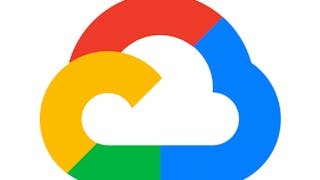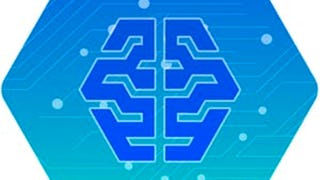In this intermediate course, you will learn to design, build, and optimize robust batch data pipelines on Google Cloud. Moving beyond fundamental data handling, you will explore large-scale data transformations and efficient workflow orchestration, essential for timely business intelligence and critical reporting.

Gain next-level skills with Coursera Plus for $199 (regularly $399). Save now.

Build Batch Data Pipelines on Google Cloud
This course is part of multiple programs.

Instructor: Google Cloud Training
49,629 already enrolled
Included with
(1,710 reviews)
What you'll learn
Determine whether batch data pipelines are the correct choice for your business use case.
Design and build scalable batch data pipelines for high-volume ingestion and transformation.
Implement data quality controls within batch pipelines to ensure data integrity.
Orchestrate, manage, and monitor batch data pipeline workflows, implementing error handling and observability using logging and monitoring tools.
Details to know

Add to your LinkedIn profile
5 assignments
See how employees at top companies are mastering in-demand skills

Build your subject-matter expertise
- Learn new concepts from industry experts
- Gain a foundational understanding of a subject or tool
- Develop job-relevant skills with hands-on projects
- Earn a shareable career certificate

There are 4 modules in this course
You will learn the critical role of a data engineer in developing and maintaining batch data pipelines, understand their core components and lifecycle, and analyze common challenges in batch data processing. You'll also identify key Google Cloud services that address these challenges.
What's included
1 assignment2 plugins
You will design scalable batch data pipelines for high-volume data ingestion and transformation. You'll also optimize batch jobs for high throughput and cost-efficiency using various resource management and performance tuning techniques.
What's included
1 assignment2 app items7 plugins
You will develop data validation rules and cleansing logic to ensure data quality within batch pipelines. You'll also implement strategies for managing schema evolution and performing data deduplication in large datasets.
What's included
1 assignment1 app item6 plugins
You will orchestrate complex batch data pipeline workflows for efficient scheduling and lineage tracking. You'll also implement robust error handling, monitoring, and observability for batch data pipelines.
What's included
2 assignments1 app item6 plugins
Earn a career certificate
Add this credential to your LinkedIn profile, resume, or CV. Share it on social media and in your performance review.
Instructor

Offered by
Explore more from Cloud Computing

Google Cloud

Google Cloud
 Status: Free Trial
Status: Free Trial Status: Free Trial
Status: Free TrialGoogle Cloud
Why people choose Coursera for their career




Learner reviews
1,710 reviews
- 5 stars
65.96%
- 4 stars
25.73%
- 3 stars
6.02%
- 2 stars
1.46%
- 1 star
0.81%
Showing 3 of 1710
Reviewed on May 27, 2020
A great course to help understand the various wonderful options Google Cloud has to offer to move on-premise Hadoop workload to Google Cloud Platform to leverage scalability of clusters.
Reviewed on May 19, 2020
Great course teaching how to build batch pipelines through GCP technologies, and showing cool tools for data wrangling and analysis
Reviewed on Jun 18, 2020
Excellent course with appropriate explanation on cloud data fusion, data composer, data proc and cloud data-flow. Must learn course for all aspiring Big Data Engineers.
Frequently asked questions
Yes, you can preview the first video and view the syllabus before you enroll. You must purchase the course to access content not included in the preview.
If you decide to enroll in the course before the session start date, you will have access to all of the lecture videos and readings for the course. You’ll be able to submit assignments once the session starts.
Once you enroll and your session begins, you will have access to all videos and other resources, including reading items and the course discussion forum. You’ll be able to view and submit practice assessments, and complete required graded assignments to earn a grade and a Course Certificate.
More questions
Financial aid available,





